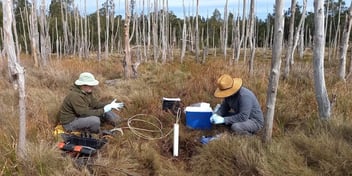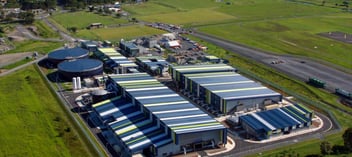Desalination plants not harmful to marine life, long-term study reveals
Brine discharged from water desalination plants into the ocean does not have a toxic impact on marine life, an Australian study has found.
Over six years, researchers from the University of New South Wales (UNSW), Southern Cross University and the NSW Department of Primary Industries investigated the effects of pumping and diffusing salt water back into the ocean at the Sydney Desalination Plant.
The team studied six underwater locations at a depth of about 25m during the plant’s construction, operation and closure.
They found high salt levels in the outfall brine had little impact on marine life. Rather, it was the high-pressure diffusers releasing water into the ocean that had the biggest effect on the ecosystem.
In their paper, published in Water Research, the researchers said invertebrates that benefit from high-flow conditions, such as barnacles, increased in numbers, while those with slow swimming larvae, such as tubeworms, lace corals and sponges reduced in quantity.
Study lead Dr Graeme Clark said the results were surprising, as they debunked the prevailing belief that high salt levels in the brine would be harmful to marine life.
“The high-pressure diffusers that return the high-concentrate salt water to the ocean at a high velocity are so effective at diluting the brine that concentrations were almost at background levels within 100m of the outfall,” he said.
“This is the result of good engineering and good modelling behind the diffuser design.”
The plant has been in water security mode since 2012, but with the entirety of NSW in drought and water flows into the Sydney catchment at record lows it is likely to be switched back on in the coming months.
According to WaterNSW, the plant will begin to restart when Sydney dam levels fall below 60%. They are currently at 63.7%.
UNSW Dean of Science and senior author of the study Professor Emma Johnston said the research was timely given the increasing reliance on desalinated water both in Australia and overseas.
Globally, about 1% of the world’s population depends on desalinated water for daily use, which is supplied by almost 20,000 desalination plants.
“Frequent and severe climate and population driven water shortages are projected to accelerate the growth in desalination in the coming years … We need reliable and high-quality drinking water and we need to understand the potential for ecological damage from the act of extracting it from the ocean,” she said.
“The good news is that our comprehensive study shows the hyper-saline outflow from this modern plant is not having a major impact on the NSW coast.”
However, Johnston said governments should consider water saving and reuse strategies before desalination.
“Our study simply shows that the potential marine ecology impacts from a well-designed and well-located desalination plant should not immediately prevent us from considering desalination for the supply of fresh drinking water in a period of severe, prolonged drought,” she said.
Sydney Water, the original owner of the plant, commissioned the research. The plant is now owned by a consortium led by the Ontario Teachers’ Pension Plan Board, which paid the NSW Government $2.3 billion for a 50-year lease in 2012.


